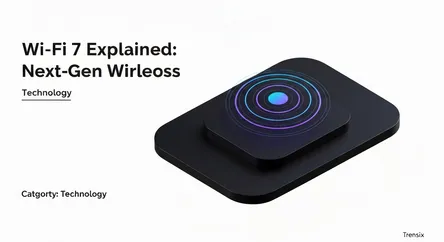Technology
Wi-Fi 7 Explained: Next-Gen Wireless

Discover Wi-Fi 7 (802.11be), the next generation of wireless tech. Learn how its faster speeds and lower latency will change how we connect.
What is it?
Wi-Fi 7, officially known as IEEE 802.11be Extremely High Throughput (EHT), is the next evolution in wireless networking. It builds upon Wi-Fi 6 but introduces significant enhancements for faster speeds, lower latency, and greater capacity. Key features include ultra-wide 320 MHz channels and its most notable innovation: Multi-Link Operation (MLO). MLO allows devices to connect and transmit data across multiple frequency bands (2.4 GHz, 5 GHz, and 6 GHz) simultaneously. This creates a more stable, efficient, and faster connection by aggregating bandwidth and avoiding congestion.
Why is it trending?
The buzz around Wi-Fi 7 is growing as certified routers and client devices, like smartphones and laptops, are hitting the market. The demand for high-bandwidth applications like 8K video streaming, cloud gaming, and immersive AR/VR experiences is pushing the limits of current standards. Wi-Fi 7 is the industry's answer, promising a generational leap in performance that can handle the data-intensive tasks of the future. It’s seen as the wireless equivalent of the jump from 4G to 5G cellular technology, unlocking new possibilities for home and enterprise networking.
How does it affect people?
For most people, Wi-Fi 7 translates to a dramatically improved online experience. It means virtually instantaneous downloads, buffer-free streaming of the highest quality content, and ultra-low latency for competitive online gaming. In a smart home, it will effortlessly handle dozens of connected devices without slowdowns. For businesses and public venues, it provides the robust network capacity needed to support a high density of users and an increasing number of IoT devices, ensuring smooth and reliable connectivity for everyone and everything connected to the network.